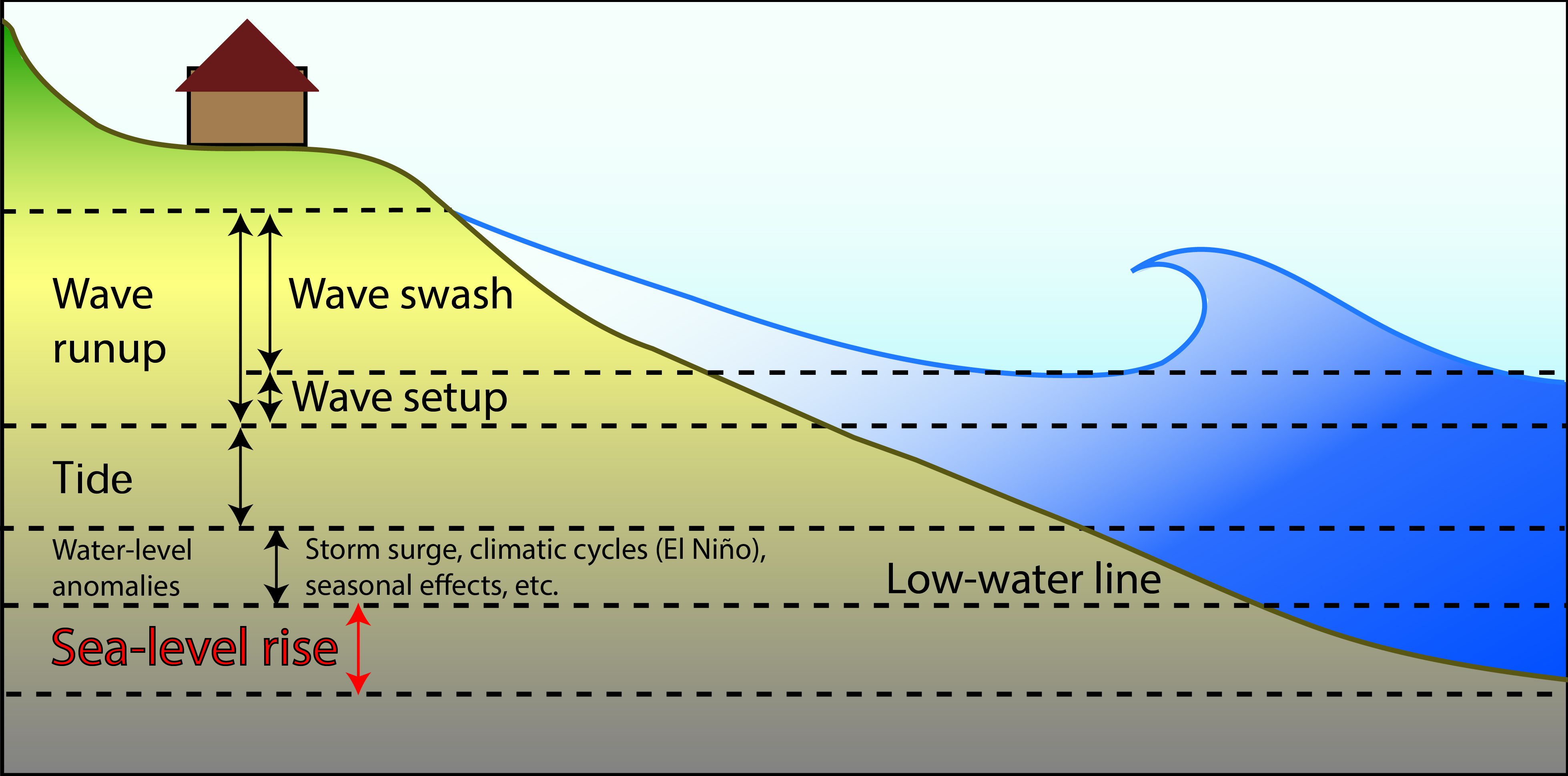Python Wave Runup
Empirical wave runup models implemented in Python for coastal engineers and scientists.



Contents
Installation
Installation of py-wave-runup can be done with pip:
pip install py-wave-runupUsage
The following wave runup models are available for use:
-
models.Stockdon2006: The most commonly cited and widely used runup model. -
models.Power2018: Based on the Gene-Expression Programming technique. -
models.Holman1986: Incorporated wave setup using Duck, NC measurements. -
models.Nielsen2009: Based on runup measurements from NSW, Australia. -
models.Ruggiero2001: Based on runup measurements from dissipative Orgeon beaches. -
models.Vousdoukas2012: Based on runup from European Atlantic coast -
models.Senechal2011: Based on extreme storm condition at Truc Vert, France -
models.Beuzen2019: Gaussian Process (GP) runup model -
models.Passarella2018: Genetic Programming (infragravity and total) swash model
To get calculate runup, setup and swash, define your offshore conditions in your selected runup model then you can access each parameter:
from py_wave_runup import models
model_sto06 = models.Stockdon2006(Hs=4, Tp=12, beta=0.1)
model_sto06.R2 # 2.54
model_sto06.setup # 0.96
model_sto06.sinc # 2.06
model_sto06.sig # 1.65Documentation
Documentation is located at https://py-wave-runup.readthedocs.io.
Background
Wave runup refers to the final part of a wave's journey as it travels from offshore onto the beach. It is observable by anyone who goes to the beach and watches the edge of the water "runup" and rundown the beach. It is comprised of two components:
- setup: the height of the time averaged superelevation of the mean water level above the Still Water Level (SWL)
- swash: the height of the time varying fluctuation of the instantaneous water level about the setup elevation
Setup, swash and other components of Total Water Level (TWL) rise are shown in this handy figure below.
Figure from Vitousek et al. (2017) [1]
Wave runup can contribute a significant portion of the increase in TWL in coastal storms causing erosion and inundation. For example, Stockdon et al. (2006) [2] collated data from numerous experiments, some of which showed wave runup 2% excedence heights in excess of 3 m during some storms.
Given the impact such a large increase in TWL can have on coastlines, there has been much research conducted to try improve our understanding of wave runup processes. Although there are many processes which can influence wave runup (such as nonlinear wave transformation, wave reflection, three-dimensional effects, porosity, roughness, permeability and groundwater) [3], many attempts have been made to derive empirical relatinoships based on easily measurable parameters. Typically, empirical wave runup models include:
- Hs: significant wave height
- Tp: peak wave length
- beta: beach slope
This python package attempts to consolidate the work done by others in this field and collate the numerous empirical relationships for wave runup which have been published.
Contributing
As there are many different empirical wave models out there, contributions are most welcome. If you don't feel confident about changing the code yourself, feel free to open a Github issue and let us know what could be added. Otherwise, follow the steps below to create a Pull Request:
-
Create the development environment:
-
Create your feature branch (
git checkout -b feature/fooBar) -
Install pre-commit hooks for automatic formatting (
pre-commit run -a) -
Add your code!
-
Add and run tests (
pytest) -
Update and check documentation compiles (
sphinx-build -M html ".\docs" ".\docs\_build") -
Commit your changes (
git commit -am 'Add some fooBar) -
Push to the branch (
git push origin feature/fooBar) -
Create a new Pull Request
Citation
If this package has been useful to you, please cite the following DOI: https://doi.org/10.5281/zenodo.2667464
License
Distributed under the GNU General Public License v3.
References
| [1] | Vitousek, Sean, Patrick L. Barnard, Charles H. Fletcher, Neil Frazer, Li Erikson, and Curt D. Storlazzi. "Doubling of Coastal Flooding Frequency within Decades Due to Sea-Level Rise." Scientific Reports 7, no. 1 (May 18, 2017): 1399. https://doi.org/10.1038/s41598-017-01362-7. |
| [2] | Stockdon, Hilary F., Robert A. Holman, Peter A. Howd, and Asbury H. Sallenger. "Empirical Parameterization of Setup, Swash, and Runup." Coastal Engineering 53, no. 7 (May 1, 2006): 573-88. https://doi.org/10.1016/j.coastaleng.2005.12.005 |
| [3] | United States, Army, and Corps of Engineers. Coastal Engineering Manual. Washington, D.C.: U.S. Army Corps of Engineers, 2006. |
